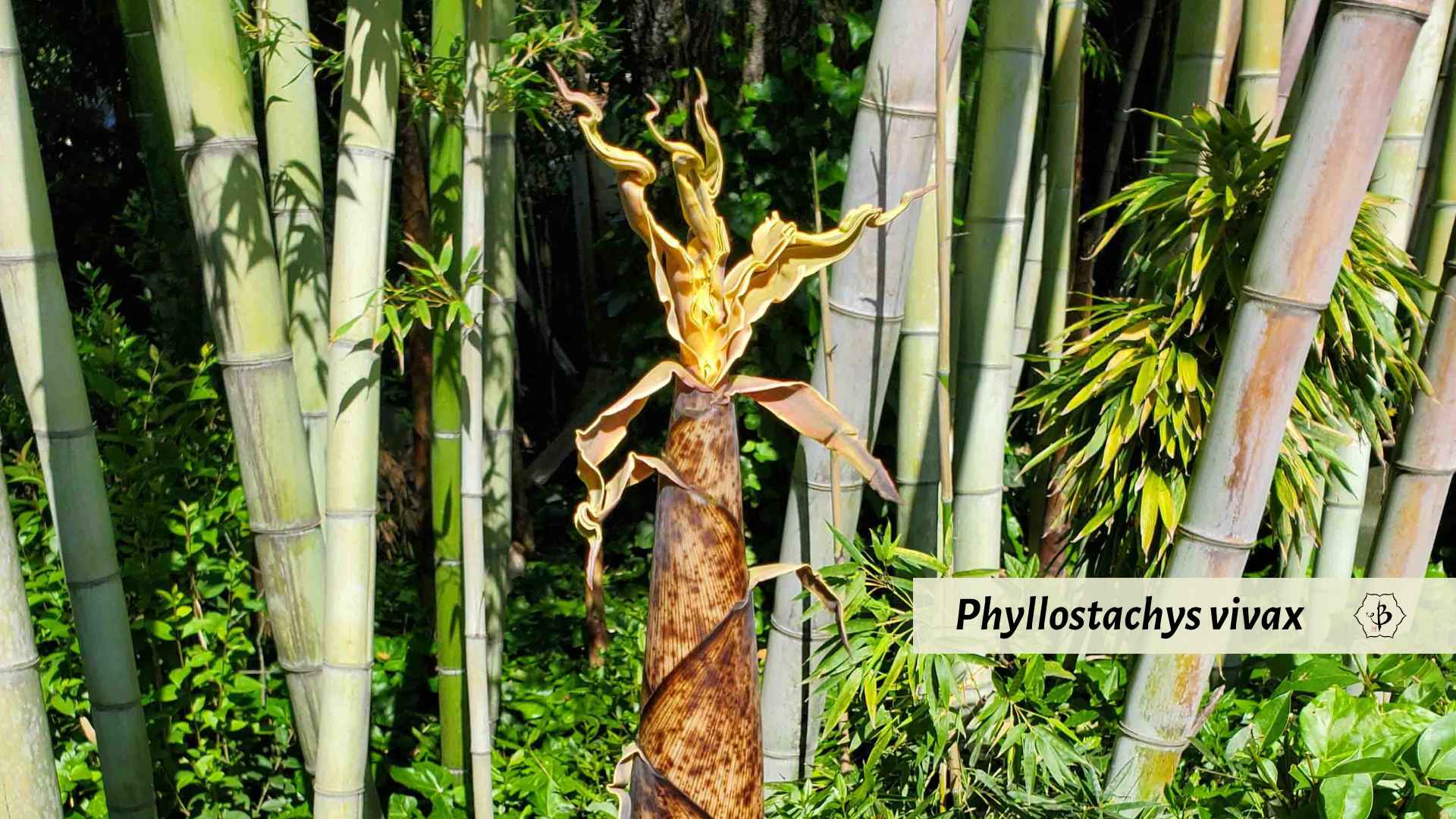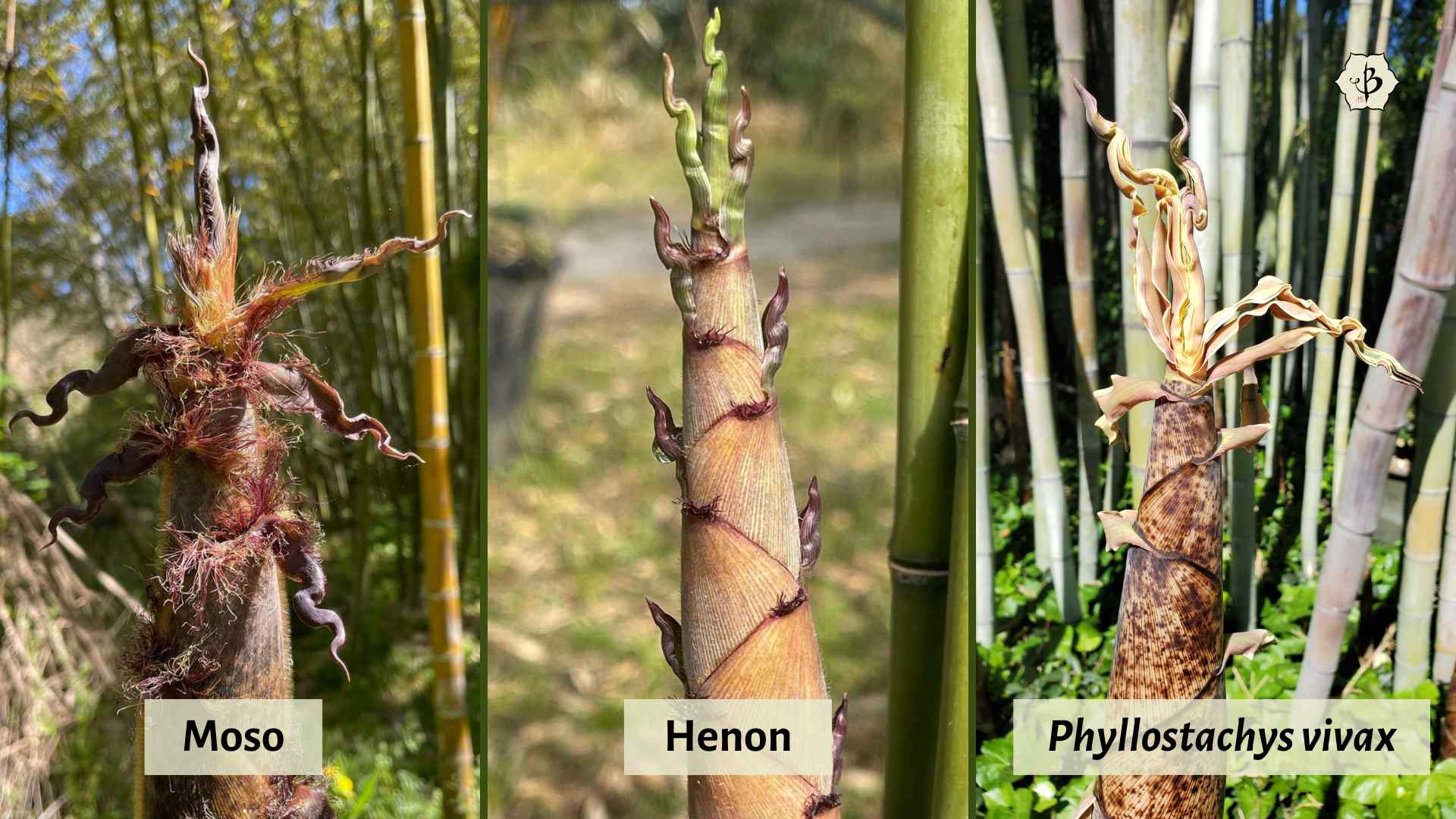If you want to plant some giant timber bamboo, but you don’t live in the tropics (or subtropics), Phyllostachys vivax might be your best choice. Tall, thick, golden-green, and full of leaves, Vivax has just about everything that most bamboo lovers are looking for.
Phyllostachys vivax is a temperate timber bamboo with running roots, native to China and possibly Taiwan. Towering culms can grow 50 or 60 feet tall, with diameters of up to 4 or 5 inches. Compared to other varieties of timber bamboo, Vivax is very fast-growing, cold-hardy, and relatively drought-tolerant. But despite their size, the poles from this species are not ideal for building and construction. With its running rhizomes, this bamboo can also spread quickly, so be prepared.

This article — first published in December 2022 and most recently updated in March 2024 — is part of an ongoing series about various bamboo species. Check out some of these other popular links to learn more.
- Introducing Bamboo: Genus by genus
- Bambusa balcooa: Beema Bamboo
- Bambusa oldhamii: Oldham’s Bamboo
- Chimonobambusa quadrangularis: Square Bamboo
- Dendrocalamus asper: Giant bamboo
- Melocanna baccifera: Ideal for erosion
- Phyllostachys nigra: Black Bamboo
- Pseudosasa japonica: Arrow bamboo
- Semiarundinaria fastuosa: Temple bamboo
Characteristics of Phyllostachys vivax
Vivax, as it is commonly known, is a very popular choice of ornamental bamboo for those who have the space and want to make a large statement. This timber bamboo variety grows big and it grows quickly, both upward and outward. The poles have a light-green color and in optimal conditions can grow more than 60 feet tall, as much as 5 inches thick.
Gardeners are especially fond of Vivax because of how quickly it gets established. Japanese Timber Bamboo (Phyllostachys bambusoides) can take several years to reach maturity, and Moso (Phyllostachys edulis) seems to take forever. But when properly cared for, Vivax can achieve maturity in just 4 or 5 years. At that point, it’s already producing those massive culms that force you to bend your neck. The plants are filled with large leaves, and the poles arch gently at the tops, all of which create a very attractive appearance.

Vivax is probably the most adaptive species of giant bamboo, being even more cold-hardy than most big Phyllostachys varieties. It can easily survive in zones 6 and 7, and will even tolerate Canadian weather, although the poles won’t grow nearly as large there. At the same time, Vivax also grows well in the high heat and is relatively drought-tolerant, making it a good choice in Texas or the Southwest. And for these reasons, some urban landscaping projects in the Middle East have also incorporated Vivax into their scenery.
As with any running bamboo, please remember to have some kind of containment strategy before you plant this formidable timber species. Its fast-growth rate is fantastic when you want to establish a quick privacy screen. But several years down the road, your neighbors won’t be so happy if they find the roots lifting up their rose bushes and stepping stones. We recommend digging a containment trench or burying a rhizome barrier of some kind.

Uses for Phyllostachys vivax
The size and growth rate of this colossal bamboo make it ideal as a privacy hedge. Of course, it won’t fit in tight spaces, and it might be too much around your hot tub. But if you or your neighbors have second-story windows, and you like to mind your own business, big bamboo is a perfect way to do it. Bamboo also makes an excellent sound barrier if you’re close to noisy traffic or construction.
Speaking of construction, you’ve probably heard that big bamboo is also great for building. But Vivax is not so suitable for this purpose, due to its thin culm walls. Despite the size of the poles, the walls aren’t so thick, and therefore lack structural strength. If you want to split the poles into slats, however, for some other type of craft, then Vivax is a fine choice.
To build something more durable, try growing Henon or Japanese Timber instead. Or, in a subtropical climate like Florida, the Deep South, or Southern California, I would suggest Bambusa oldhamii or maybe even a mighty clump of Dendrocalamus.

Branch out
If you’re fascinated by giant grasses and enjoyed reading about Vivax bamboo, then you’ve come to the right place. We’ve got hundreds of articles touching on all aspects of bamboo. Check out some of these in-depth articles to learn more.
FEATURE IMAGE: Phyllostachys vivax stretches to the sky in Santa Rosa, California. Photo by Fred Hornaday.




















